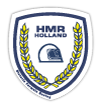HMR FORMULA 3
The Formula 3 has traditionally been regarded in the pass as the first major stepping stone for F1 hopefuls. It is typically the first point in a driver’s career at which most drivers in the series were aiming at professional careers in racing rather than being amateurs and enthusiasts.
– cars must have a flat bottom;
– cars with ground effect are not allowed to participate.
Division 1
- Pre ’71 Formula 3 (1000 cc – acc. Tech. Reg. Formula 3 1970)
- Pre ’74 Formula 3 (1600 cc – acc. Tech. Reg. Formula 3 1973)
- Pre ’74 Formula Supervee 1600 (Aircooled – acc Tech. Reg. Formle Super Vee (air) 1973)
- Pre ’64 Formula Junior (disc brakes)
Division 2
- Pre ‘79 Formula 3 (2000 cc – acc. Tech. Reg. Formula 3 1978)
- Pre ’79 Formula Supervee 1600 (air/water cooled – with aerofoil & slick tyres – acc Tech. Reg. Formel Super Vau 1978)
- Pre ’77 Formula Renault (acc. Tech. Reg. F. Renault 1976)
- Pre ’72 Formula 2 (1600 cc – acc. Tech. Reg. Formula 2 1971)
Division 3
- Pre ‘85 Formula 3 (2000 cc – acc. Tech. Reg. Formula 3 1984)
- Pre ’83 Formula Supervee 1600 (water cooled – with aerofoil & slick tyres – acc Tech. Reg. Formel Super Vau 1982)

